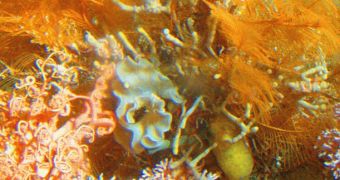Scanned images are not always ready made for web usage. Even when you use the "Scan to Web" option, available as a function for many scanners, the resulting image must be processed with an image editor in order to achieve the desired quality and file size.
Assuming that you have an image to scan for later use on a web page, first you must correctly set the position of the image on the scanner glass, at the right angle to avoid the unnecessary rotations of the image in the editor. The scanner resolution should be set at 72 DPI, but if you want to make available the web image for printing, the optimal resolution is 300 DPI for best printing results.
At a higher resolution you obtain a bigger image file size. The images must be saved using TIF uncompressed or PSD format, but if your scanner software does not allow you these options, you can also save the image as bitmap (BMP). The color profile used for web must be RGB (CMYK is used for printing purposes) and the file format PNG, JPEG or GIF. It is recommended to scan images as color photographs in order to obtain the best quality. Then, using a photo editing software you must begin to prepare the images for web publishing.
In case you scan a black and white image for example, the scanner will not always return the desired image details. You can modify the gamma value settings and to make the image sharpen using the appropriate options provided by your image editor. In many cases, a slightly increase of contrast value and a decrease of number of colors used is a good practice. For a black and white image, the conversion of colors to gray will determine the decrease of file size and allows you to obtain sharper lines. Use also the crop and resize functions in order to make a smaller image file.
The optimal web image size is 400x400 for best onscreen visibility. After you make all the image file modifications, the image should be saved as JPEG or PNG. In case of the JPEG files, the optimal file size for fast loading web pages is about 100-150 KB. You can obtain a smaller JPEG file size by modifying the compression options values for: quality, subsampling, lossless compression and more.
For example, you can try a lower quality value (higher compression) option combined with no subsampling to output a smaller image file size. You should not save the same JPEG image as JPEG many times, because it will repeatedly lose quality at almost the same file size. If you are not satisfied with the compression induced by your image editor, you can try to optimize images with some specialized software, but I recommend you to do that only in case of GIF and PNG images.

 14 DAY TRIAL //
14 DAY TRIAL //